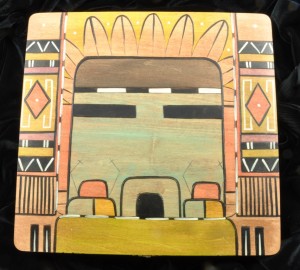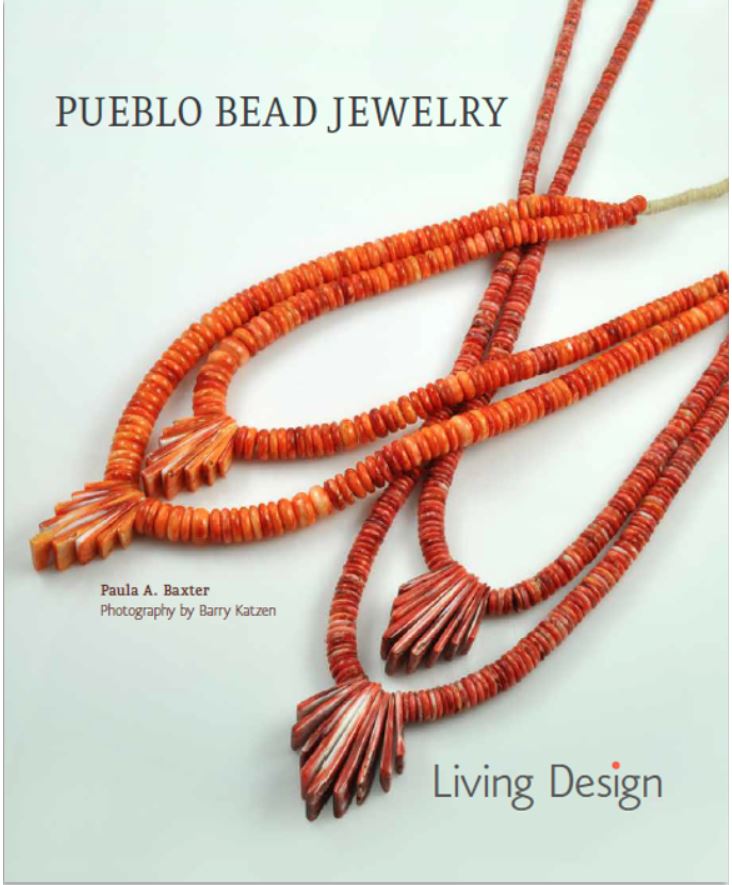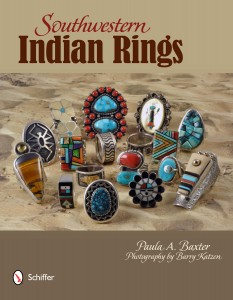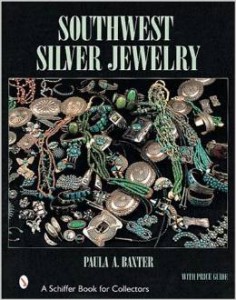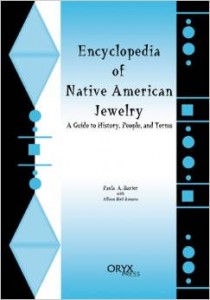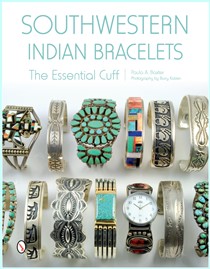You never know where you can find a pleasant break. When in Gallup, we had to wait ten minutes or so for Navajo Spirit on Coal Avenue to open back up — a little sign in the door promised they’d be right back.
We wandered across the street to Glenn’s Bakery and discovered the kind of delight we wished we had at home.
Part of investigating Indian Country is finding out what local treats are waiting to be enjoyed. America’s bakeries are often under siege from the ever-present supermarket conglomerates. We enjoyed this respite from shopping. Now, if Gallup would only get a bookstore back…
A ten-day festival is taking place in Indian Country; it began in December and it continues. I won’t be able to attend, but fellow travelers in the region should contemplate taking in some of this event. “Thunder in the Desert 2012” is being held at Rillito Raceway Park in Tucson until January 8. Music concerts, including open-invitation guitar-playing, art exhibits, storytelling, equestrian events, and dancing will be featured. One special program is a midnight friendship dance that took place on New Year’s Eve. What intrigues me is the opportunity for Native and non-Native interaction. Check out more information at www.facebook.com/thunderinthedesert to see what will transpire. There is still much cultural misunderstanding about Indian heritage and spirituality. In worse cases, Indian beliefs have been hijacked to fulfill fanciful non-Native desires.
This event promises a chance to come together and see what is genuine and what is not. For those who do attend, especially tourists, can you send us a report?
Those tangible reminders of mid-twentieth century America can still be found along Interstate 40 when it parallels the famous Route 66. One of the trickiest elements to deciding where to stop depend on if you have to go — like, to the bathroom. Not every emporium of tackiness makes the visitor welcome enough to offer them use of the on-site toilets. Our last meander to and from I-40 from Flagstaff to Gallup and back revealed that some facilities make it very plain that “our bathrooms are for paying customers only.” This is a change from the longtime vendor’s good-natured calculation that the need to answer a call of nature could also involve buying snacks, tourist souvenirs, or that pair of moccasins you’ve always wanted to have. Maybe the twenty-first century message to travelers of I-40/Route 66 is get your kicks elsewhere.
The Heard Museum is offering an enchanting little exhibition on Indian dolls — one of my favorite Southwestern souvenirs. My first trip on Route 66 took place in 1962 when we drove from New York to Albuquerque so my father could attend graduate school at the University of New Mexico. I acquired a rag doll of a Cherokee lady — in homespun dress and bandana — from an Oklahoma buffalo farm. Later, I got my one and only Navajo lady doll in velveteen shirt and long skirt from the famed portal of the Plaza of the Governors in Santa Fe. The exhibition at the Heard awoke all those old dormant feelings of youthful tenderness. I still have those dolls, but like so many people, I’ve packed them away someplace where they’ll languish until a future day. The bookshop at the museum offers the viewer a chance to buy some Native-made contemporary dolls.
(Visit “More Than Child’s Play: American Indian Dolls,” running through March 4, 2012)
We’ve always found that buying Southwestern souvenirs that are ridiculous to be part of the enjoyment of this region. I must admit I’ve never gone for the life-like replicas of rattlesnakes, but how many opportunities does one get to buy Mexican jumping beans or shot glasses and salt and pepper shakers bearing the slogan “get your kicks on Route 66?” At places like Indian City along Route 40, you can relax your values and go for the elemental gag. On this last visit, I ended up with colorful large-sized postcards for the corkboard collage I curate in my kitchen. I especially like the one that shows a rusty 1940s Chevy and reads “Historic Route 66 – You Just Like Me for My Body.”
Navajo weavings are a wonderful category of Indian-made art. These textiles, old and new, bear testimony to the artist’s eye for small details that pack a punch. Like clouds and scenes from reservation life, a weaving can come alive when animals are introduced. The tree of life weavings come to mind at once, but then there are those compositions that portray the sturdy chipmunk, carefree Kaibab squirrel, or anxious cottontail. One of my favorite categories is the pictorial weaving, where the introduction of animals makes the entire composition that much livelier. We were fortunate in the late 1980s to obtain a small weaving by the artist Fanny Pete that consists entirely of rabbits! It’s the pride of our home and I’d never let our amazingly spoiled bunnies anywhere near it. For those of you unacquainted with domestic rabbits—they chew textiles like puppies…
Recently the New York Times had an article on “36 Hours in Albuquerque.” It’s got interesting tips on the new and trendy, but it left out the best places for Indian jewelry and pottery. We can fill that gap right now:
Wright’s Indian Art: This is the oldest of the three business mentioned here. Wright’s was founded back in 1907, and was originally on Route 66 (where “everything” used to be in Albuquerque). They offer a wide selection of excellent Native American jewelry, pottery, paintings, fetishes and other examples of the best available.
Cowboys and Indians Antiques: If you’re looking for vintage Native American (and Western) art, including jewelry, Navajo weavings, Pueblo pottery, andHopi kachinas, this is the place for you. They’re on historic Route 66.
Andrews Pueblo Pottery: This Old Town business has a wonderful selection of Native American pottery, plus other Native art such as painting and sculpture. They also have some fine Indian jewelry. Andrew Pottery has ben a source of fine Native American art since 1974.
Disclaimer: While we purchase merchandise from these companies, we have not received any gifts or remuneration from them in return for mentioning them in this website.
One of the most welcome sights from our recent visit to Gallup was a new storefront proclaiming Bill Malone Trading Co. Malone is one of the most experienced of the old time Indian traders left in the business; he also married into the Navajo, and his son-in-law is Perry Shorty, one of the most talented Navajo jewelers in business and a star of the SWAIA Indian Market. Perry always sells out of his booth holdings in record time.
Malone has not had an easy decade. Bureaucratic ineptitude led to his being removed from a longtime position as trader at Hubbell Trading Post, and the story, a fascinating one for those of us suspicious of governmental management practices, can be found in The Case of the Indian Trader. Malone had gone on to run Shush Yaz in Gallup, but we found him now at his own shop at 235 W. Coal Avenue, on the block right behind Richardson’s Trading Co. He sells mostly Navajo arts, and his rugs, pots, baskets and jewelry are of great quality. My friend and I found vintage watchbands with fine coral stones there, a commodity hard to get nowadays. A practical-minded man, he also offers watch battery replacements and jewelry repairs. The presence of this reputable trader in town is a bonus indeed, and his shop’s wares are the product of a genuine understanding and affinity for the best in Native-made arts.
Some of the crafts previously made as lower cost items for sale to outsiders have developed a new life. We’ve learned that the fairly inexpensive, Indian symbol-driven sandpaintings done for tourist consumption have taken a new form. Navajo artists with art training and talent are producing pieces with non-symbolic subjects, including figural studies, landscapes, and scenes from daily life or popular culture. Check on YouTube for a video by the Ettcity Boys demonstrating how to make such a picture. The artists are—you guessed it—young individuals who are striving for a new look to an old-time tourist collectible. Young Native women (and a few men) with a talent for sewing are also making “Indian style” garments and accessories for sale, spurred on by the growth of this category at shows and in real life. Keep your eye out for tote bags and purses with a Southwestern flair.
